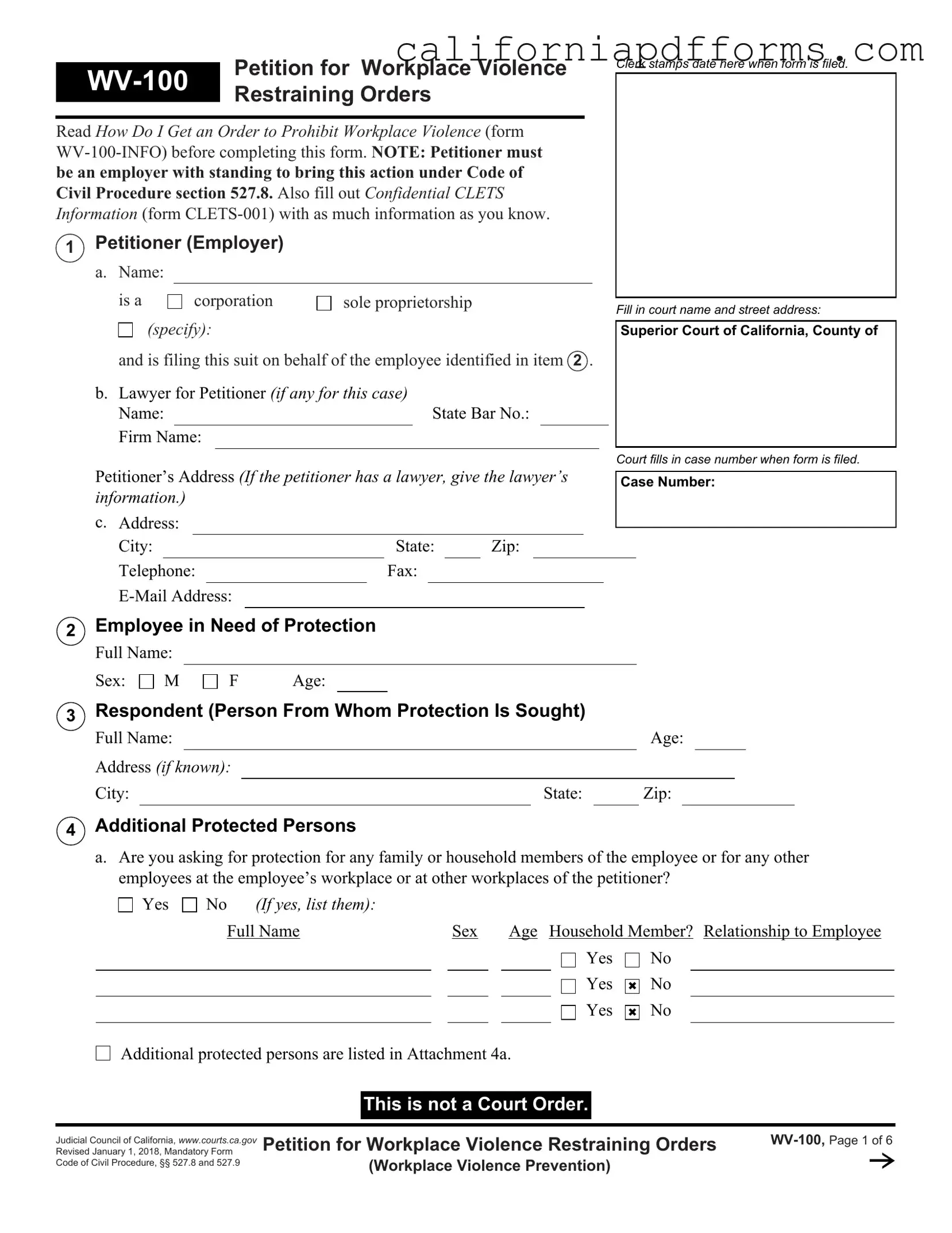The California Wv 100 form, formally known as the Petition for Workplace Violence Restraining Orders, is designed for employers who seek legal protection for their employees from individuals who pose a threat of workplace violence. This form allows employers to petition the court for a restraining order against a person who has threatened or harmed an employee. The goal is to ensure a safe working environment by legally prohibiting the respondent from engaging in threatening behavior or contact with the employee.
Only employers with standing under the California Code of Civil Procedure section 527.8 can file this form. This means that the petitioner must be an employer, such as a corporation or sole proprietorship, acting on behalf of an employee who is in need of protection. It is crucial that the petition is filled out accurately, including the necessary details about the employee and the respondent, to ensure the court understands the situation and can take appropriate action.
When completing the Wv 100 form, several key pieces of information are required:
-
Petitioner Information:
This includes the name of the employer, contact details, and, if applicable, the lawyer representing the employer.
-
Employee Information:
The full name, sex, and age of the employee needing protection must be provided.
-
Respondent Information:
Details about the individual from whom protection is sought, including their name and address if known.
-
Incident Description:
A detailed account of the incidents that led to the need for protection, including dates, locations, and any witnesses.
Additionally, the form requires information about any previous court cases involving the respondent and the employee, as well as any existing restraining orders.
Once the Wv 100 form is filed with the court, the court will review the petition. If the court finds sufficient grounds for concern, it may issue a Temporary Restraining Order (TRO) to provide immediate protection until a hearing can be held. The respondent will then be served with the petition and notified of the hearing date. During the hearing, both parties will have the opportunity to present their case, and the court will determine whether to issue a long-term restraining order. It is important to note that the process requires careful adherence to legal protocols, including timelines for service and court appearances.
